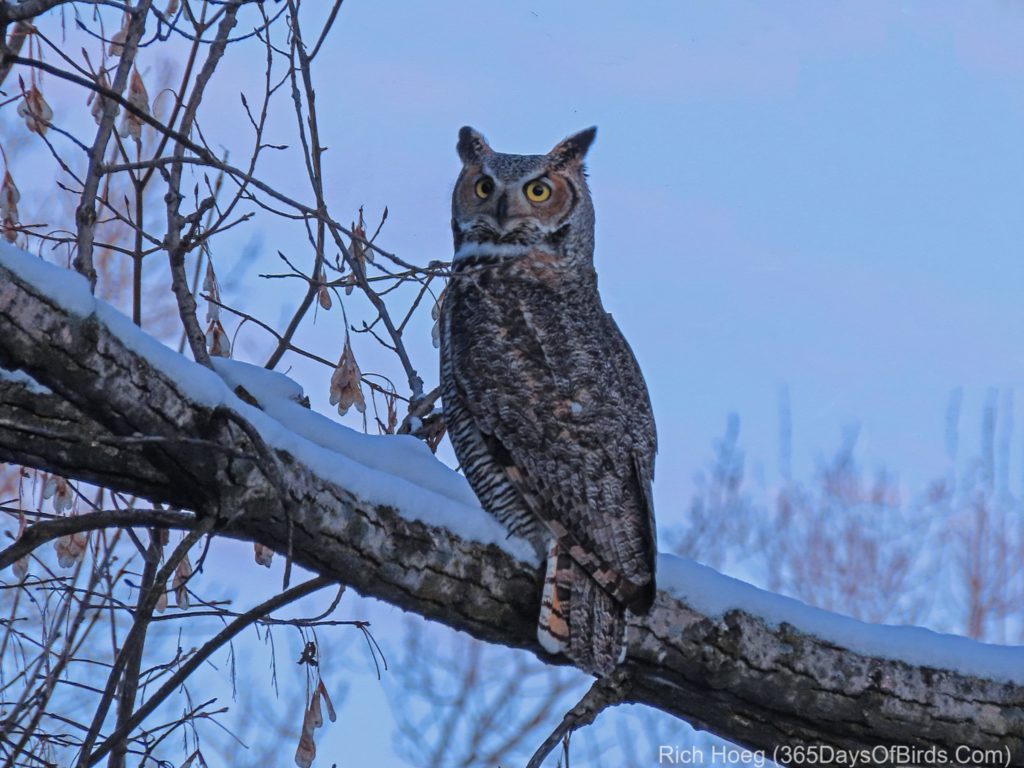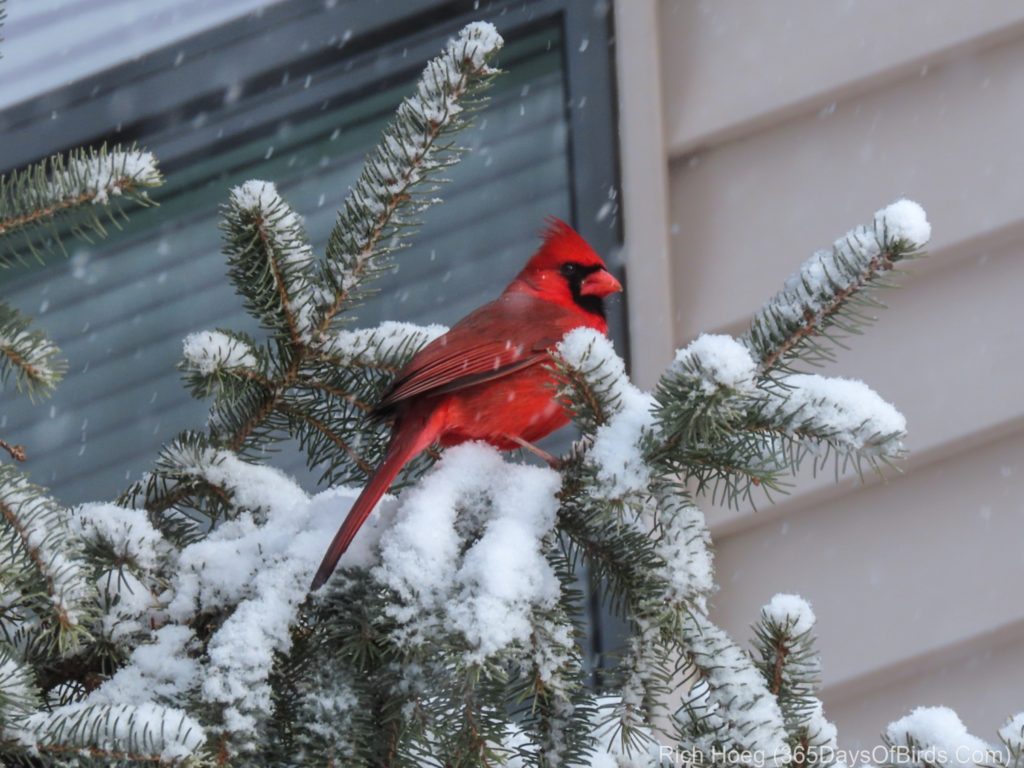The Northland welcomed me home with a burst of snow. I welcomed the white stuff which made the trees nicely flocked. The owls even welcomed me back and during our short stay at my daughter’s house each morning I heard a pair of Great Horned Owls hooting their love song (these owls will nest within the next week or two). I accepted the owl’s call, and found them the second morning ten minutes before sunrise (off trail hike through deep snow required). I also found a flock of cardinals, but try as I might … they refused to give me a classic pose (building in the background).
Great Horned Owl just before Sunrise
Finally, here is a “repost” from the Friends of Sax-Zim Bog, which is the wilderness area where I volunteer. While the words are not my own, I 100% agree with the message. While we welcome all the visits to the Northland, it is important not to “overlove’ our birds.
The Sax-Zim Bog is home to 5 species of nesting owl, but our most recent visitor is not among them! This Boreal Owl has recently been seen frequenting the Admiral Road Feeding Station. This bird, as well as the Barred Owl at Winterberry Bog, have drawn the attention of a number of visitors lately and that number will only go up this coming weekend. Here are a couple of tips for viewing owls, so we can avoid unduly stressing them as they hunt at a difficult time of year:
1) Keep noise levels low. All owls, especially Boreal Owls and Northern Saw-whet Owls, are auditory predators that rely on their ears to find prey under the snow. Too much noise will disrupt their hunting success. A study by Mason et al. 2016 showed that for every decibel increase in sound, Northern Saw-whet Owls hunting success decreased 8%.
2) Keep a respectful distance. Owls have a number of signs to show us they are being disturbed, especially through their posture and behavior. The owl in the photo is rousing (ruffling its feathers). This behavior, plus relaxed eyelids, lets us know that the bird is relaxed. Signs of distress include wide open eyes, compressed head feathers, and opened bill or bill clacking. If you notice an owl showing these behaviors, take a step or two back. Spotting scopes are a great way to view birds from a distance. If you are willing, set up your scope and encourage others to view the bird from a distance.
3) The welfare and safety of all wildlife comes first, and our photos or videos come second. Every time. Considering the location of this bird, we as observers should also consider our safety, as Admiral Road is a well traveled road. Let’s try and be good neighbors to those folks living in the Bog, as well as the birds.
If you are interested in learning more about safe owl or wildlife observation, we have information on our website at the bottom of the Birding the Bog tab. Also, here are a couple of other great resources to get you started on interpreting owl behaviors:
- https://saxzim.org/birding-the-bog/
- https://www.internationalowlcenter.org/respectful_observation.html
- https://artusobirds.blogspot.com/2014/12/signs-of-stress-in-owls.html
